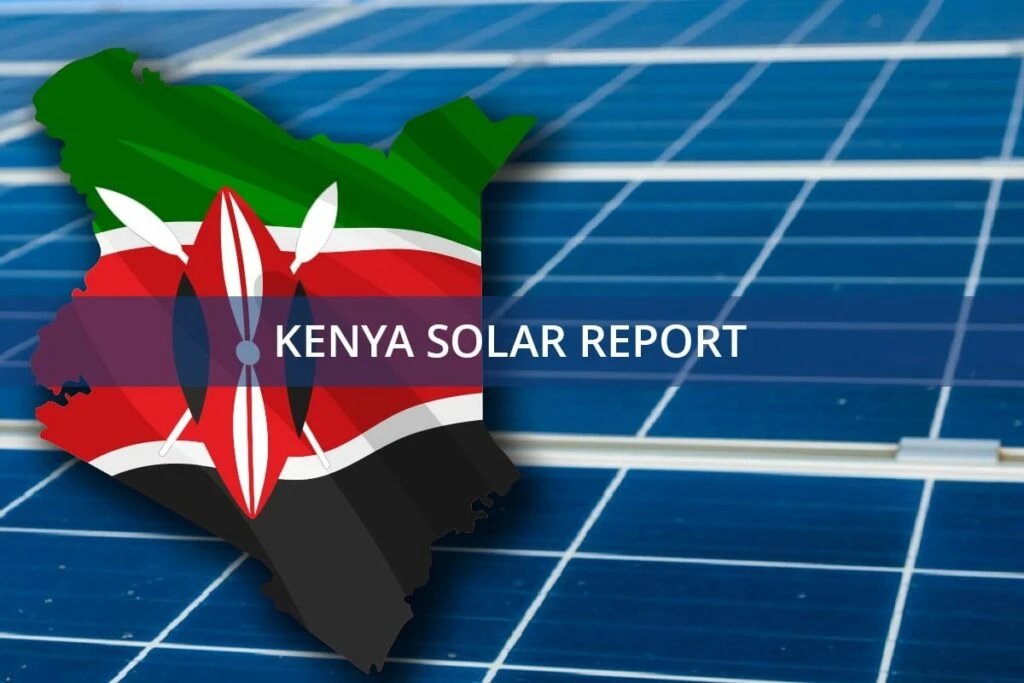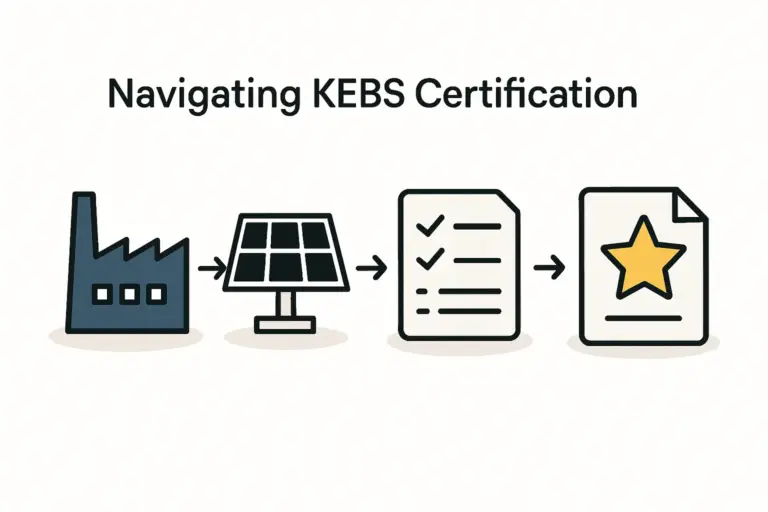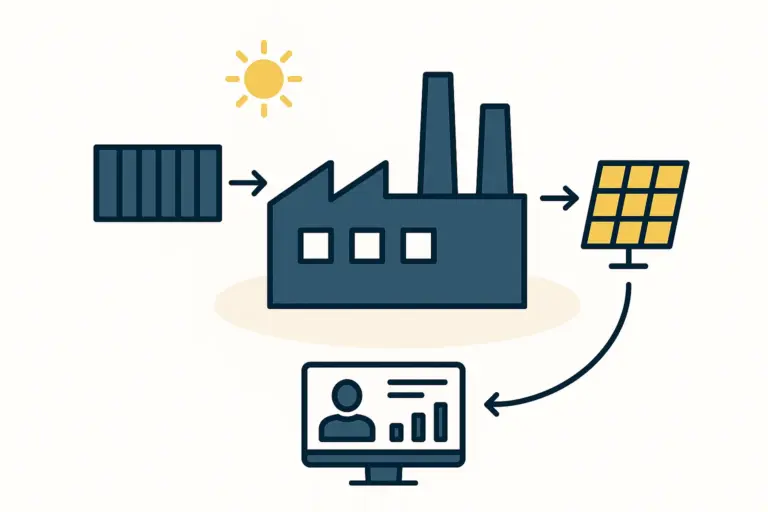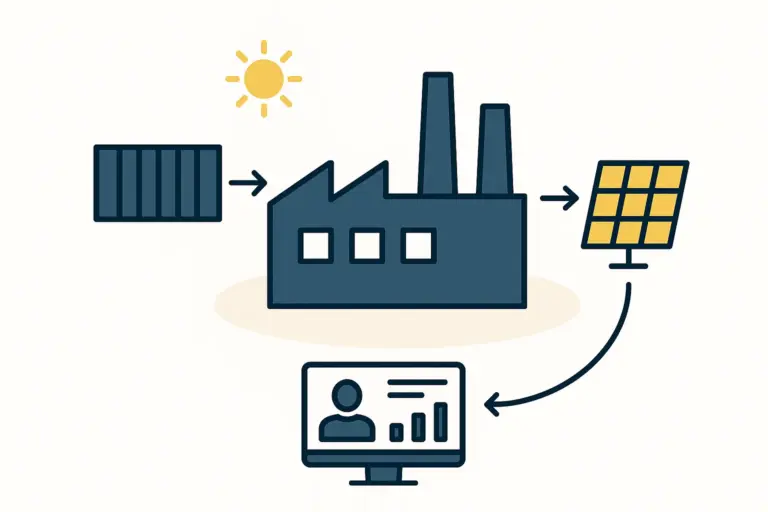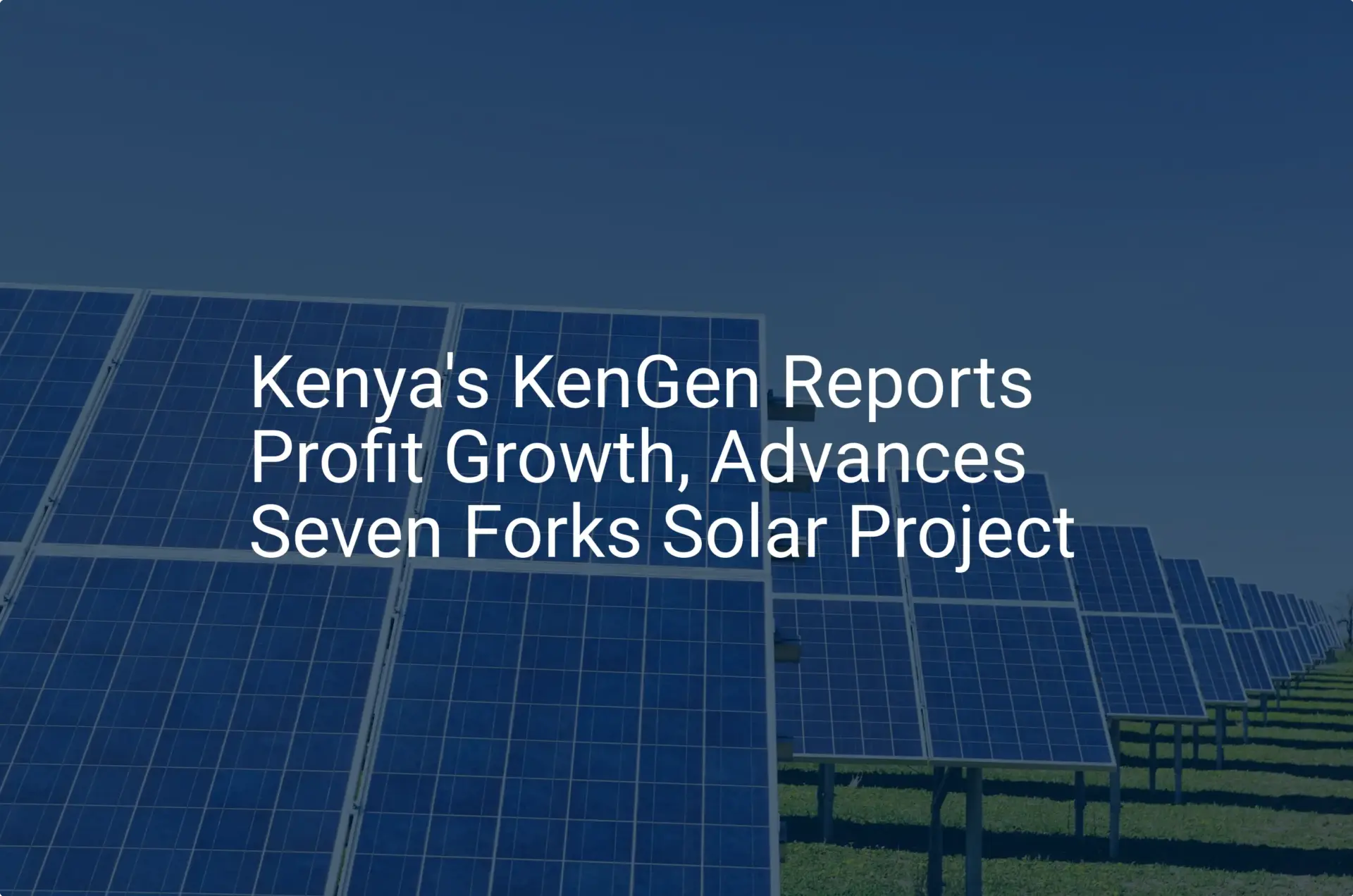An entrepreneur looking at Kenya’s energy landscape today sees a market flooded with imported solar panels. They’re on rooftops, in shops, and sold by street vendors. At first glance, competing with large-scale international manufacturers seems like an impossible challenge.
A closer look, however, reveals a significant opportunity these mass-produced imports fail to address: the specific, unmet needs of Kenya’s most dynamic solar sectors.
While Kenya has made remarkable progress in electrification, with a national access rate of around 75%, a substantial portion of the population—particularly in rural areas—remains off-grid. This gap isn’t just a challenge; it’s the foundation of a thriving market for localized energy solutions. The key to success for a local manufacturer lies not in competing on price for standard modules, but in engineering products for the Kenyan context—a strategy that builds a durable competitive advantage.
Understanding Kenya’s Two Key Off-Grid Markets
A targeted product strategy begins with understanding the primary drivers of off-grid solar adoption in Kenya. Two sectors stand out for their scale and specific technical requirements: Solar Home Systems (SHS) and Solar Water Pumping (SWP) for agriculture.
The Solar Home System (SHS) Opportunity
Since 2009, over one million solar home systems have been sold in Kenya. These small-scale solutions provide power for lighting, mobile phone charging, and small appliances, transforming daily life for families without access to the national grid.
However, the market has been flooded with low-cost, low-quality “pico-solar” products. These systems often fail prematurely, eroding consumer trust and souring their perception of solar technology.
This creates an opening for a local manufacturer to build a powerful brand reputation. By producing reliable, durable SHS modules designed for local conditions, a Kenyan company can offer a product that customers can depend on. The value proposition shifts from the lowest initial cost to the best long-term value and reliability—a critical differentiator in a market tired of disposable products.
The Agricultural Powerhouse: Solar Water Pumping (SWP)
Agriculture is the backbone of the Kenyan economy, contributing over 25% of GDP and employing more than 60% of the population. For farmers in arid and semi-arid regions, access to water is the single most critical factor for success. Solar water pumping has emerged as a game-changing technology, enabling reliable irrigation and water for livestock without dependence on an unstable grid or expensive diesel generators.
The challenge lies in the modules themselves. Standard imports, typically designed for large grid-tied systems, are often a poor technical match for the DC water pumps common in agricultural applications. A standard 60- or 72-cell module often has a voltage that is too high, leading to system inefficiency or the need for complex, expensive electronics to regulate power.
A local manufacturer can design and produce modules with a voltage and power output perfectly matched to the most popular water pumps used by Kenyan farmers. This technical alignment creates a plug-and-play solution that is more efficient, more reliable, and easier for local technicians to install and service.
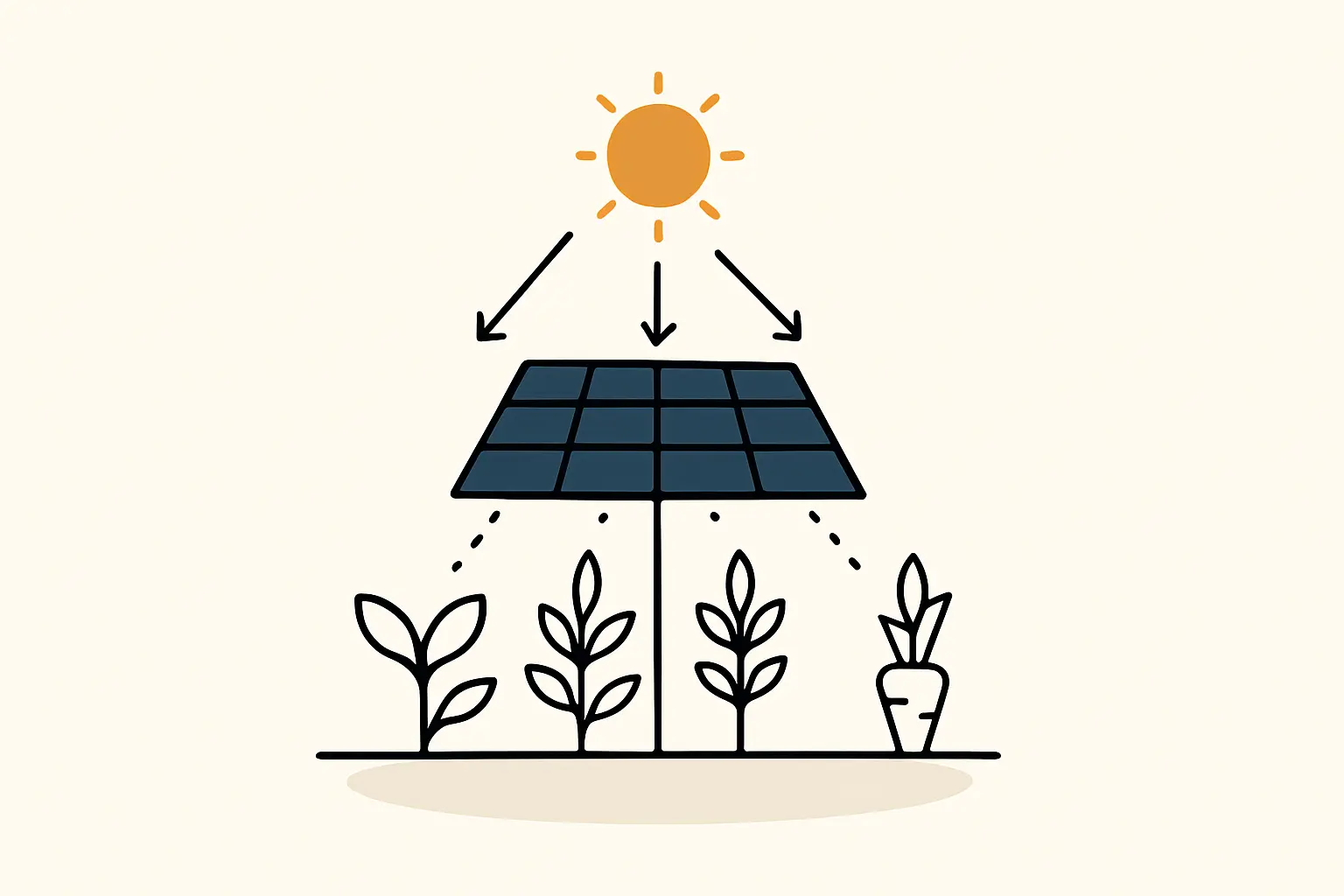
The Strategic Advantage of Local, Application-Specific Manufacturing
Shifting focus from a commodity product to a tailored solution allows a local manufacturer to compete on value, not just price. This strategy builds on three pillars: technical optimization, leveraging government support, and building local trust.
Tailoring Module Design for Market Needs
A modern, flexible production line lets a manufacturer modify key aspects of a solar module’s design to serve specific market needs.
-
Voltage and Cell Count: Standard modules often operate at voltages (e.g., 36-40V) that are inefficient for charging 12V or 24V battery banks in SHS. Producing modules with a lower cell count (e.g., 36 cells for a 12V system) delivers a product that performs better and extends battery life. The same principle applies to matching a module’s output directly to the optimal input of a solar water pump.
-
Size and Form Factor: Large, heavy modules are difficult to transport on rural roads and install on small structures. A local facility can produce smaller, more manageable panels optimized for boda boda transport and installation on small kiosks or rural homes.
-
Enhanced Durability: A local manufacturer understands the local environment. They can build modules with thicker glass to withstand hailstorms, stronger frames to handle rough transport, and better junction box sealing to protect against fine dust—features that create a product known for its longevity.
Leveraging Government Incentives and Building Trust
The Kenyan government actively supports the growth of its renewable energy sector. Key policies, such as VAT and import duty exemptions on renewable energy equipment, provide a direct financial benefit that lowers initial capital expenditure. These incentives make navigating local solar investment requirements far more manageable.
A local factory is a physical symbol of commitment and reliability. Customers can trust a local brand with accessible customer service and warranties that are honored locally—a stark contrast to dealing with anonymous international suppliers. This trust is a powerful asset that importers cannot easily replicate.
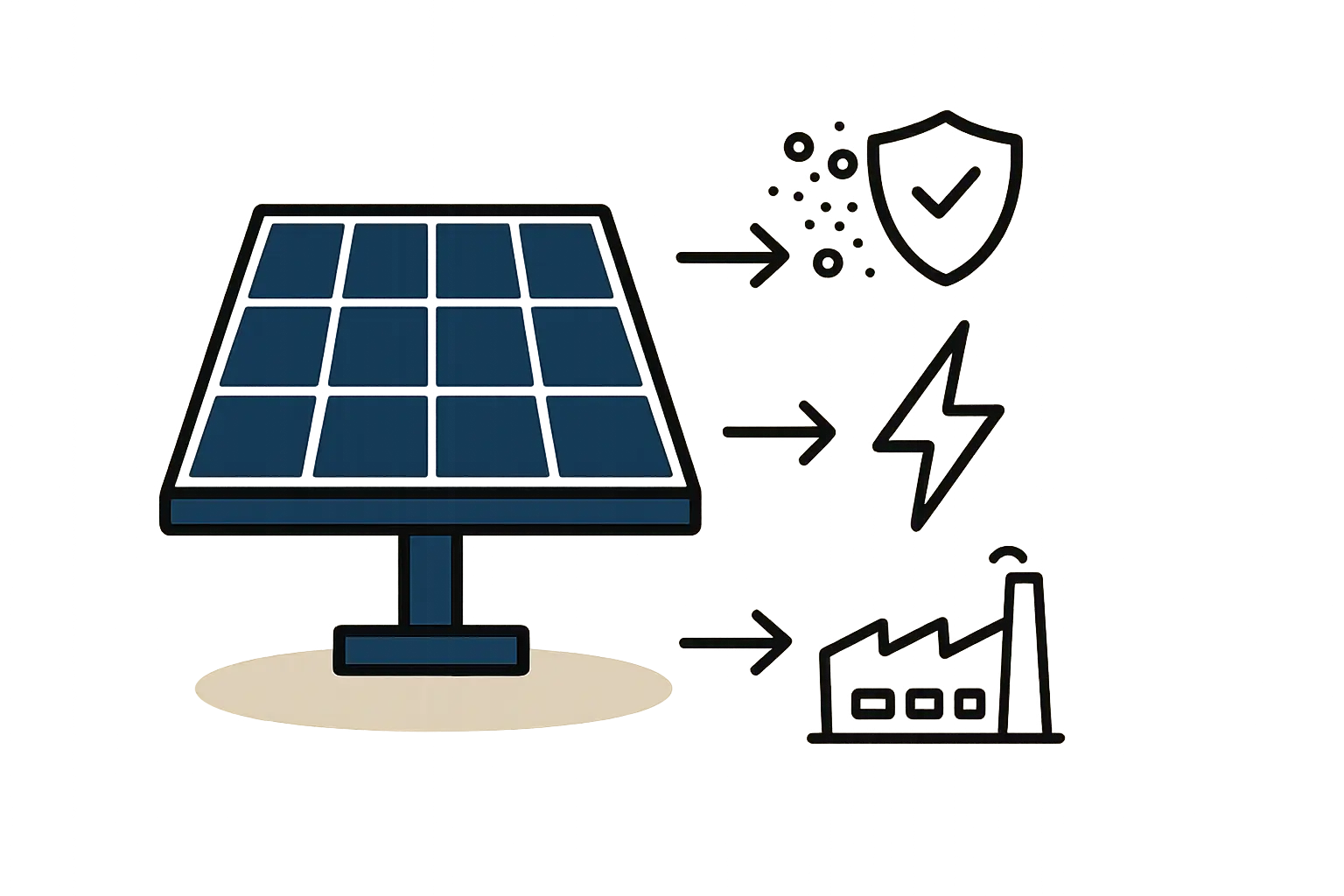
How a Flexible Production Line Enables Customization
The idea of customized manufacturing may sound complex, but a modern semi-automated production line is designed for flexibility. The solar panel manufacturing process is a series of stages, and key equipment can be easily adjusted.
For instance, a solar panel manufacturing machine such as an automatic stringer can be programmed to connect different numbers of cells, forming the basis of a custom-voltage module. Similarly, lamination and framing stations can be adapted to handle various module sizes. This inherent flexibility means a factory isn’t locked into producing a single product type. It can pivot to produce different modules based on market demand, from small SHS panels one week to mid-sized SWP modules the next.
This capability allows a business to become a true solutions provider, responding directly to the evolving needs of its customers.

Frequently Asked Questions (FAQ)
Is it possible to compete with the low prices of imported modules?
Directly competing on price for standard, mass-produced modules is not a sustainable strategy. The opportunity lies in differentiation. A local manufacturer creating application-specific modules for niche markets like SHS and SWP competes on superior performance, quality, and suitability—not on the lowest cost-per-watt. Customers in these segments are often willing to pay a premium for a reliable solution that solves their specific problem.
What is the typical investment for such a factory?
The investment depends on the desired capacity and level of automation. However, a modern 20–50 MW semi-automated line can be established for a lower capital outlay than many entrepreneurs assume, particularly when factoring in government incentives like tax exemptions on imported equipment.
Do I need a deep technical background to start this business?
While technical understanding is beneficial, it isn’t a prerequisite. Many successful founders in this industry come from business, finance, or logistics backgrounds. The key is a strong business plan and the ability to partner with experienced technical consultants. Educational platforms and structured guidance exist to bridge the knowledge gap for those new to the solar industry.
How long does it take to set up a production line?
With proper planning and experienced partners, a turnkey solar module production line can be operational in approximately 9 to 12 months, from initial project confirmation to the first certified modules coming off the line.
Conclusion: From Importer to Innovator
The path forward for an aspiring solar entrepreneur in Kenya is not to join the crowded market of importers but to become a local innovator. By focusing a manufacturing facility on the real-world needs of the off-grid and agricultural sectors, a business can build a powerful, defensible market position. This approach creates a product that is not just made in Kenya, but made for Kenya.
For entrepreneurs considering this path, understanding the foundational steps is crucial. A detailed guide on how to start a solar panel manufacturing business can provide the comprehensive roadmap for turning this strategic opportunity into a commercial reality.

